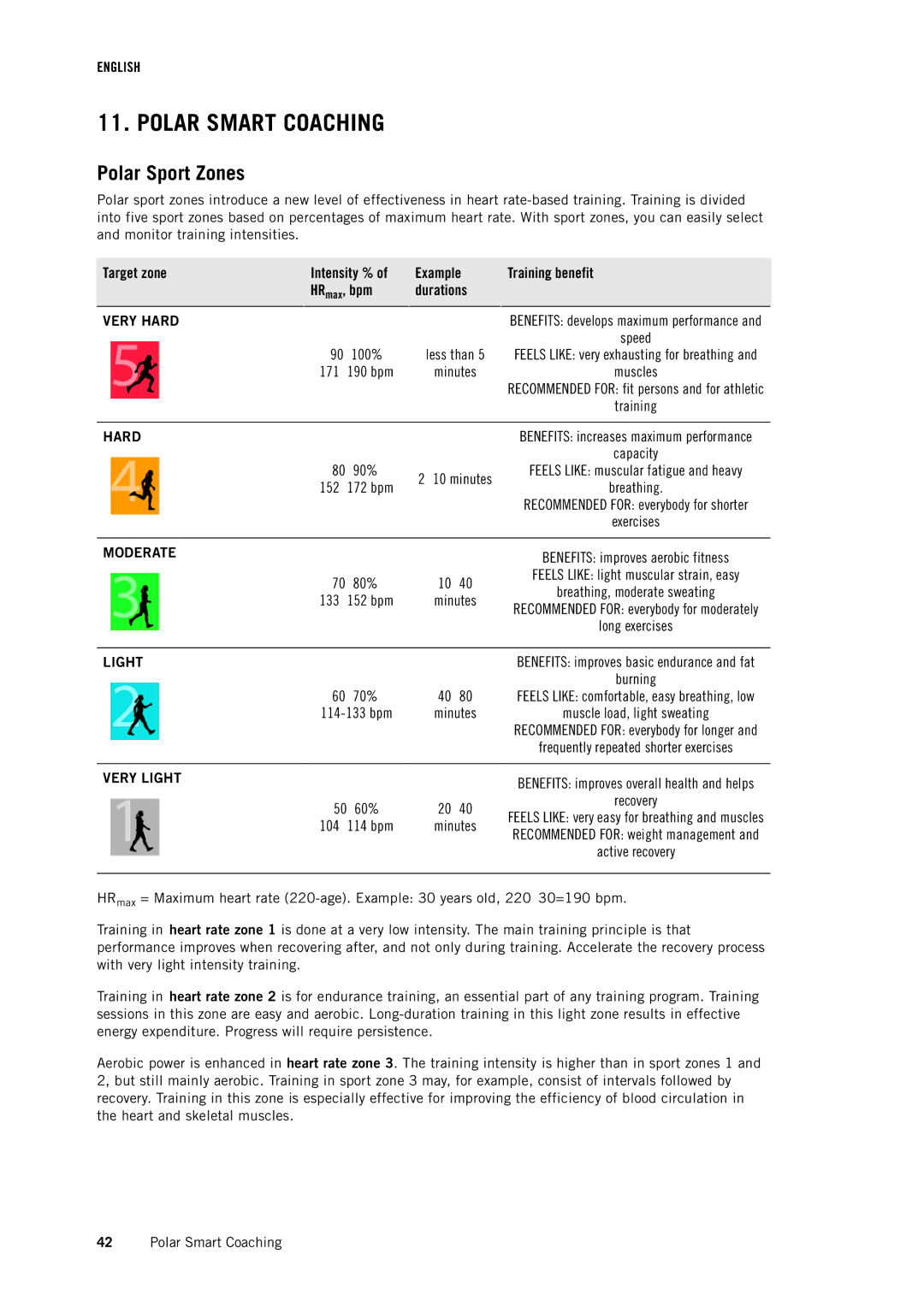
ENGLISH
11. POLAR SMART COACHING
Polar Sport Zones
Polar sport zones introduce a new level of effectiveness in heart
Target zone | Intensity % of | Example | Training benefit |
| HRmax, bpm | durations |
|
VERY HARD |
|
| BENEFITS: develops maximum performance and |
|
|
| speed |
| less than 5 | FEELS LIKE: very exhausting for breathing and | |
| minutes | muscles | |
|
|
| RECOMMENDED FOR: fit persons and for athletic |
|
|
| training |
|
|
|
|
HARD |
|
| BENEFITS: increases maximum performance |
|
|
| capacity |
| FEELS LIKE: muscular fatigue and heavy | ||
| breathing. | ||
|
| ||
|
|
| RECOMMENDED FOR: everybody for shorter |
|
|
| exercises |
|
|
|
|
MODERATE |
|
| BENEFITS: improves aerobic fitness |
|
|
| |
| FEELS LIKE: light muscular strain, easy | ||
| breathing, moderate sweating | ||
| minutes | ||
| RECOMMENDED FOR: everybody for moderately | ||
|
|
| |
|
|
| long exercises |
|
|
|
|
LIGHT |
|
| BENEFITS: improves basic endurance and fat |
|
|
| burning |
| FEELS LIKE: comfortable, easy breathing, low | ||
| minutes | muscle load, light sweating | |
|
|
| RECOMMENDED FOR: everybody for longer and |
|
|
| frequently repeated shorter exercises |
|
|
|
|
VERY LIGHT |
|
| BENEFITS: improves overall health and helps |
|
|
| |
| recovery | ||
| FEELS LIKE: very easy for breathing and muscles | ||
| minutes | ||
| RECOMMENDED FOR: weight management and | ||
|
|
| |
|
|
| active recovery |
|
|
|
|
HRmax = Maximum heart rate
Training in heart rate zone 1 is done at a very low intensity. The main training principle is that performance improves when recovering after, and not only during training. Accelerate the recovery process with very light intensity training.
Training in heart rate zone 2 is for endurance training, an essential part of any training program. Training sessions in this zone are easy and aerobic.
Aerobic power is enhanced in heart rate zone 3. The training intensity is higher than in sport zones 1 and 2, but still mainly aerobic. Training in sport zone 3 may, for example, consist of intervals followed by recovery. Training in this zone is especially effective for improving the efficiency of blood circulation in the heart and skeletal muscles.
42Polar Smart Coaching
